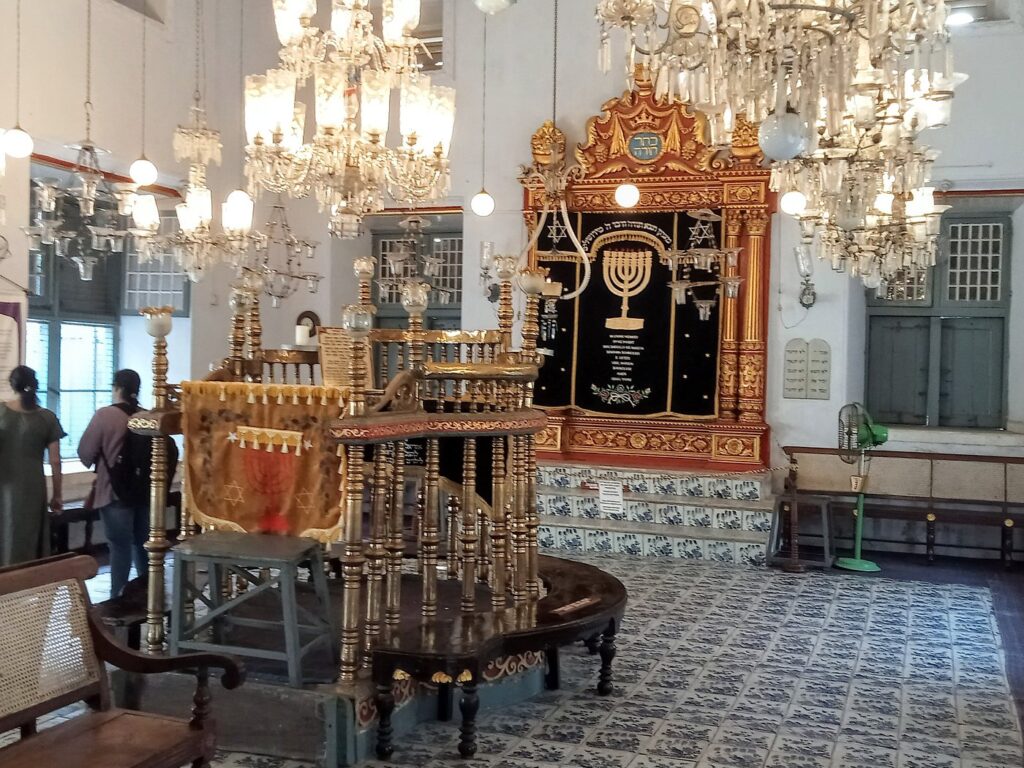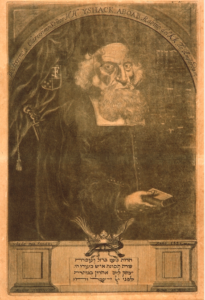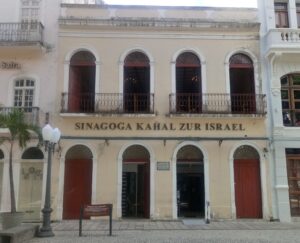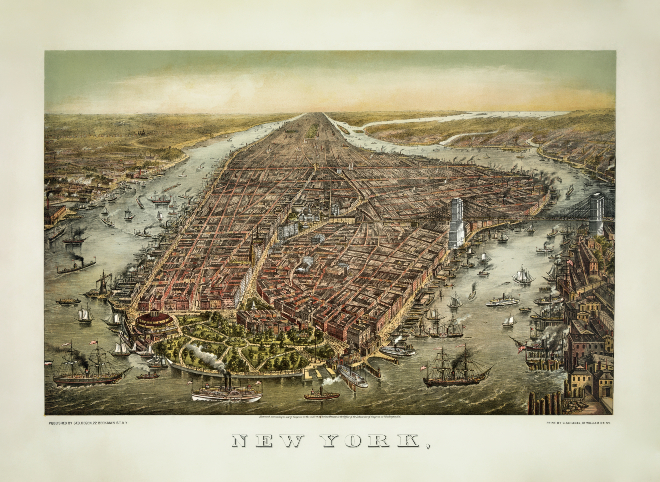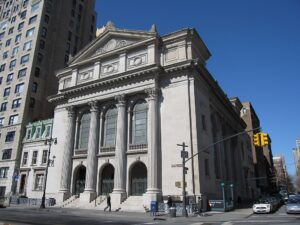Jewish Roads to India, Brazil, the Caribbean and… America!
In our recent article about the Local Parisian Exhibit that we held in le Marais Townhall, around the amazing Jewish Portuguese Diaspora, we insisted that, on the contrary to the expulsion of Jews from Spain (1492), the Jews in Portugal were all converted to Christianity (1497).
Author : Livia – Interview with an archivist in Ferrara, Italy.
Moreover, the new converts would then be forbidden to emigrate by order of King Manuel I, and thus forced to assimilate.
Yet, some risked leaving Portugal and sought refuge in the Ottoman Empire, where they could openly practice their Judaism, or in the Portuguese colonies of Africa, Asia, and America, where they hoped to enjoy relative tranquility.
Inquisition and “Status of Purify of Blood”
The situation in Portugal got worse with the installation of the Inquisition (1536) that started to track the New Christians and with the implementation of “the status of purify of blood” (limpeza de sangue) which forbade the entrance of any convert or a descendant of converts to various public activity, privileges, and honorific titles. This discriminatory legislation was based on racial criteria: it was no longer a question of religion, but of “blood”. One had to provide a certificate, following thorough genealogical investigations, going back as far as possible in the lineage, that one had no Jewish ancestor in his genealogical tree.
To read more: a brilliant text by renown historian Yosef Hayim Yerushalmi: Assimilation and racial anti-Semitism : the Iberian and the German models
Family, Social, Financial and Commercial Networks of the New Christians
The ferocious religious persecution along with the exclusion and discrimination of New Christians (even though that with the years became sincere Catholics), increased their exodus from the second half of the 16th Century, both to find ways to practice their Judaism and in search for better life conditions. And as many of the New Christians were merchants, they would rather quickly set sail on the new maritime routes which were at the height of their expansion and become involved in all sectors of the emerging trans-Atlantic trade – spices, sugar, tobacco, textiles, wine, precious stones, silver –, as well as in slave trade. Thus, both victims and agents of colonial empires, as noted the British historian Jonathan Israel, they will have a crucial role in the first “World Economy.” And European expansion. Port cities such as Antwerp, Amsterdam, Livorno, Venice, Thessaloniki, London, and Hamburg became important centers of this diaspora. Their family, commercial and financial networks spread across the globe: from Lisbon to Goa, via Northern Europe or the Middle East, but also from Lisbon to the Caribbean and the Americas, on an international scale, embracing zones dominated by four different faiths (Catholicism, Protestantism, Orthodoxy, and Islam).
Principal roads of the Jewish Portuguese Diaspora (©Chandeigne)
Marranos along the Spice Road
After the Republic of Venice and the Ottoman Empire, it was the Portuguese Empire that, since the second half of the 15th, played a key role in the spice trade.
With the opening of the sea route to the Indies by Vasco de Gama (1497) who circumnavigate Africa, beyond the Cape of Good Hope to the eastern coast of Africa, and sailed across the Indian Ocean to Calicut, on to Malabar in Kerala (South India), and the conquest of Malacca (Afonso de Albuquerque, 1511), the Portuguese Empire would quickly gain monopoly on the lucrative spice trade.
The Portuguese Road Spices (in blue)
Antwerp (Belgium) became the first hub of maritime trade in the 16th century: the city welcomed foreign merchants and promoted a certain religious tolerance. Among them, we found our Portuguese New Christians, who, in 1511, were given a charter granting them rights and privileges. Some of them were Crypto-Jews, others already sincerely Catholic, they all formed a corporation of merchants, known under the name of “the Portuguese Nation”!
During these years of prosperity, networks were woven with relatives in other Portuguese strongholds in India, mainly the fortresses of Goa and Cochin (today’s Mattancherry), which already served as a refuge for some New Christians. In Cochin, they would thus meet local Jews, who’s presence in the Malabar coast goes back to the first centuries (some records even say that the first Jews sailed to South India on the ships of King Solomon; others that they came during the Babylonian exile), and who had a synagogue in Kerala since the 12th century. While the local Jews were known as black Jews, the newcomers became known as white or foreign Jews (Paradesi). Their first synagogue was built in 1568 in Cochin (Jew Town Street).
At the beginning the New Christians enjoyed the protection of the Maharaja and could return to their early faith. However, as early as 1560, the Portuguese Inquisition established a tribunal in Goa which continued to persecute the Crypto Jews even in this remote land.
Interior of the Paradesi synagogue in Cochin.
The bimah (raised platform) was transferred, to be better conserved,
to ANU, the Israel museum of Jewish People in Tel Aviv where it can be seen.
Brazilian wood (Pau Bresil) and Sugar cane
The Portuguese fleet commanded by Pedro Álvares Cabral arrived in Brazil on 22 April 1500. To enhance the colonization the vast land, the King of Portugal divided the territory into the fifteen private and autonomous captaincies (1534) and offered financial aid to settlers, mainly planters of sugar cane and traders of Brazilian wood (Pau Bresil).
Coat of arms of Fernão de Noronha

In 1503, the Portuguese crown signed a contract with Fernão de Noronha,
a New Christian, to exploit brazilwood. In exchange for the monopoly of Brazilian wood,
Noronha gave the king a share of his profits. To reward him for his success,
the King gave him the island of Pernambuco, which would henceforth bear his name.
Among the Portuguese in search of the wealth provided by this new commerce, were many New Christians who saw it as an opportunity to escape the Inquisition (established in 1536) and initiate a new life. The northeastern coastal region (Nordeste), mainly in Pernambuco and Bahia, was the area which had a kind of soil that was very favorable for the planting of sugar cane. It was to their that the New Christians brought their know-how of sugar plantations (from Madeira and São Tomé). Very quickly, they became a prominent force in the sugar plantation, production as well as in the sugar and slave trade.
Slave market in Recife, Zacharias Wagenear (1637-1644)
Prospering and fairly protected by the colonial government, far from the Metropolis, the New Christians could thus practice their crypto Judaism in rather liberty. Yet from the end of the 16th century the Portuguese Inquisition expanded its scope to Brazil: without establishing a tribunal in this far-off land, the Inquisition started to send its emissary to track the Crypto Jews and bring them to Lisbon to be investigated and sentenced in Lisbon.
Under the Dutch Domination
Zur Israel in Recife: Firsts Synagogue & Jewish Community in America
The arrival of the Dutch and their conquest of the Nordeste (1624-1630) changed the situation of the Crypto-Jews. Under the Dutch, religious tolerance was enhanced and the
Crypto Jews could openly return to their original faith. Thus, founded in Recife, in 1640, Zur Israel (The Rock of Israel) was the very first synagogue in America! And Isaac Aboab da Fonseca the first Rabbi in the “New World”.
Rabbi Isaac Aboab da Fonseca (1605-1693)
Below, a replica of the ancient Zur Israel synagogue in Recife erected in 1999,
which serves today as a synagogue and a cultural center.
On the plaque, the successive names of the street:
Former “Street of Good Jesus” which, under the Dutch, became: “Street of the Jews”.
Today Street is named: “Street of Good Jesus”.
But the respite period was brief. After the 24 years under the Dutch, the Portuguese conquered again the region. All Dutch people and Jews had to leave. Those who risked staying, had to return to secrecy. The persecutions and tracking of Crypto-Jews by the Portuguese Inquisition increased in the 18th century.
Recent research in various areas in Brazil revealed certain reminiscences of Jewish customs (related to food, burial, prayers…) that are still preserved until today, although practiced by people who lost their link to the Jewish religion and ignore the origin or the significance of these customs. In other places, people, believing themselves to be descendants of New Christians founded by their own resources various associations (Bnei anusim) and synagogues, and are in search for various ways to express their Jewish identity.
To read more: The Faith of Remembrance: Marrano Labyrinths
From Brazil to the Caribbean
After the Portuguese reconquest of Northeast Brazil (1654), various Jews and New Christians spread to the Dutch and English possessions in the West Indies and the Caribbean, where they were mainly implicated in the Atlantic trade: sugar, tobacco, gold, porcelain, cloth, as well as in the slave trade. Various congregations are thus created in Jamaica, Curaçao, Barbados, and even in Suriname, where they mainly settled south to the capital Paramaribo on the Surinam River, a place known as the Jodensavanne (in Dutch the Jewish Savanna). In all these places, one can see until today Jewish cemeteries and visit beautiful synagogues.
Johannes Vingboons, Geheugen van Nederland (Memory of The Netherlands),
Selections from the Map Collections, 1664.
to New Amsterdam before it became New York
It was also at that time (1654) that a ship with 23 Jewish refugees from Brazil, arrived, after an arduous journey, to the port of New Amsterdam. Once on land, the local governor of the small Dutch trading post, the very Calvinist Peter Stuyvesant, was hostile to their immigration. However, under the instructions of the Dutch West India Company, he was forced to change his attitude and allow them to stay. The first Jewish community was thus born, in the city which, ten years later, would take the name of New York (when it would become an English colony). The name of this first Jewish community reflected the tribulations of its founders: Shearith Israel (The Remnant of Israel).
Current building Of the Synagogue Shearith Israel on 70th Street and Central Park West
Landmark plaques on the Spanish and Portuguese Synagogue Shearith Israel
About 2000 Jews of Spanish-Portuguese origin settled in North America by the end of the 18th century. Thus, the first Jewish synagogues and Jewish communities in North America were founded by members of the Portuguese Diaspora, before the great wave of Ashkenazi Jews: Jeshuat Israel in Newport; Mikve Israel in Philadelphia; Beth Elohim in Charleston (birthplace of Reform Judaism in the United States) and Micvke Israel in Savannah.
“To Bigotry, no sanction, to persecution no assistance”
George Washington letter to Newport Jews
On August 1790, congregants of the Touro Synagogue of Newport, Rhode Island, warmly welcomed George Washington. With the leader of the congregation, Moses Seixas addressed him a warm message expressing their hope that the new American Government would grant religious tolerance to all citizen’s. Several days later, George Washington wrote back his now-famous letter in which he reinforced the ideal of religious liberty in American life.
Every summer, the Touro Synagogue Foundation holds The George Washington letter Reading, honoring the heritage of religious freedom.
Do you want to meet the Author Livia in Paris ?
Book one of her private tour.
Flora & Livia
Flora attending Livia’s exhibit in Cité Universitaire
Livia – Chief Curator of the Exhibit – in Portugal, Lisboa





